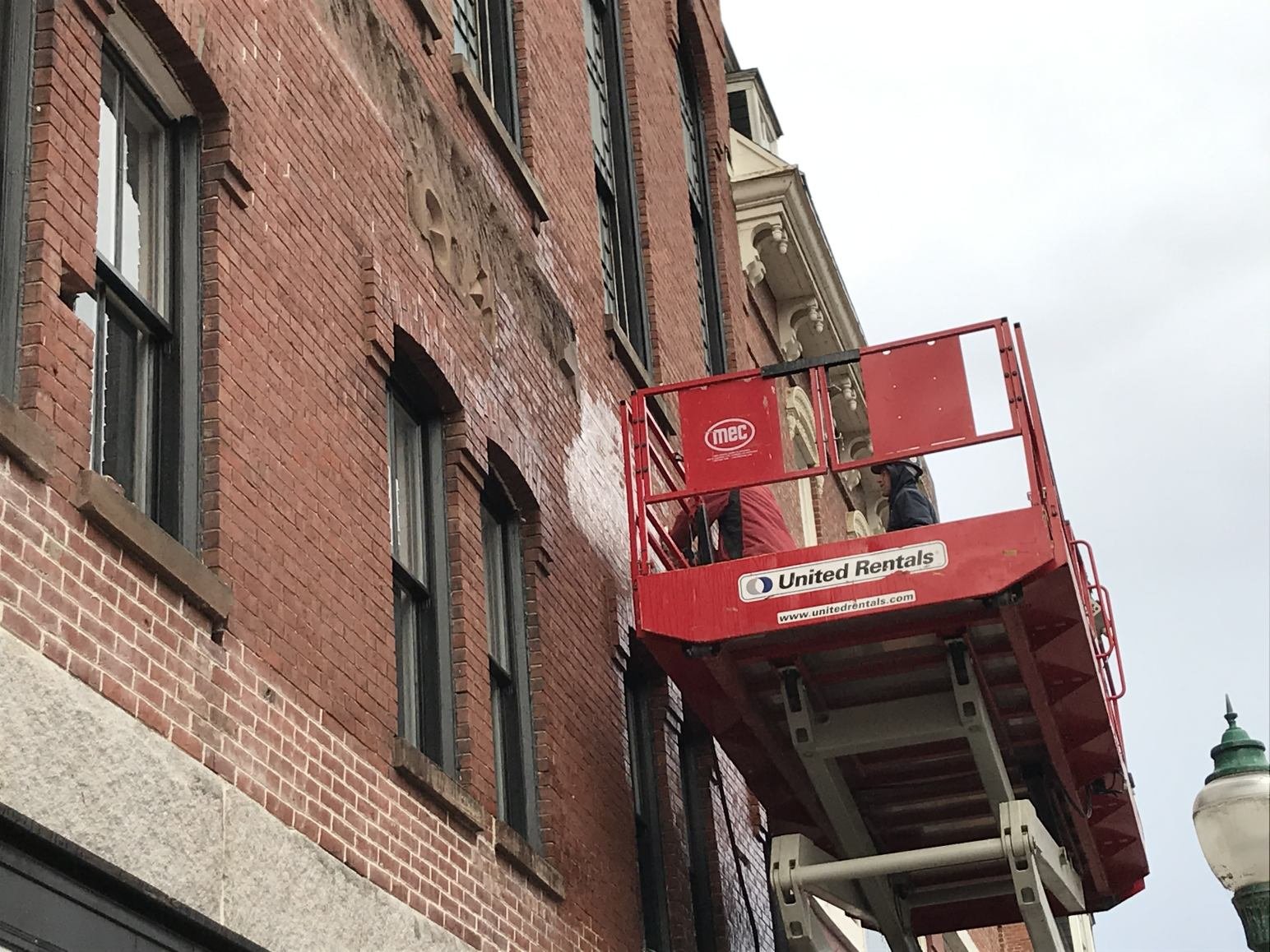At one time, Maine boasted over 60 opera houses which were often found on the upper floors of core downtown buildings, each one of them serving as a hub for arts, culture, and social gatherings. The decades-long effort to save and rehabilitate the Johnson Hall Opera House has returned such a prized resource to Gardiner.
After striking it rich in the Gold Rush, Benjamin Johnson moved back to Gardiner and invested in a hotel that he renamed the Johnson House. In 1864, he built a two-story addition atop the livery stable, including a dining room, billiard room, and large hall. It emerged as an integral piece of the cultural fabric of Kennebec County, hosting hundreds of plays, musicians, and events. In 1888, he formally renovated the space into an elaborately decorated opera house. Johnson died in 1903 and his widow Henrietta carried on the business until her death in 1932. She upgraded the hall for moving pictures and silent film theatre with the help of Bunker & Savage architects in 1931. The last movie was shown upstairs in 1956, marking the end of an era.
Fast forward to the 1980s, when local citizens formed the nonprofit, Johnson Hall, Inc. to eventually purchase the property and restore it. Their efforts started on the ground floor, by first constructing a multi-purpose teaching and performance space. From 1984 until 2022, this remained the only usable space. The second and third floors had been taken down to their bones and there was no heat or water.
In 2013, the Board of Directors took the first steps towards realizing the dreams of its founding members, and hired Executive Director, Michael Miclon whose theatrical career began as a teenager at Johnson Hall. In just a few years with new leadership, a bold plan, and a successful start to the capital campaign, work commenced. The first phase of the project focused on the building’s exterior with Ganneston Construction serving as the general contractor. This included repointing of the brick masonry by Masonry Preservation Associates, restoration of 21 historic windows by Jacob’s Glass, and repair of the galvanized tin cornice. This was funded in part through the Maine Development Foundation’s REvitalizeME program and a grant from The 1772 Foundation in partnership with Maine Preservation.
The second phase of the project looked inward, with Archetype Architects leading the design team and Hanson Historic Consulting serving as preservation consultant. From 2022 to 2024, all three floors were completely rebuilt. The first-floor theater and box office were rehabilitated, while a spacious lobby, restrooms, and green room for the artists were added on the second floor. The third floor boasts a 400-seat theater with state-of-the-art sound, lighting, and acoustic treatments. As entire walls and floors were reframed, small details like the plastered proscenium edge were carefully maintained and restored. Funding from the Northern Border Regional Commission supported a new elevator to enhance public access, as well as a stage lift and loading dock.
A creative development partnership between Johnson Hall Inc. and Developers Collaborative provided access to both traditional foundation and philanthropic support, as well as state and federal historic rehabilitation tax credits. And it was needed. The challenges of the project were myriad: the COVID-19 pandemic, two floods, workforce shortages, inflation, supply chain issues, and even the war in Ukraine which affected steel prices. A project budget that began at $4.1 million ballooned to $9.3 million. CEI stepped up as a state tax credit investor, while Kennebec Savings Bank served as the federal tax credit investor–and jump started the capital campaign in 2016 with a $100,000 cash donation. The “Take a Seat” campaign provided a way for individual contributions to match grant awards.
In its first year of operation, the newly renovated theater brought in over 6,000 audience members from 36 states, 186 towns in Maine and four countries, making an immense impact on the regional economy and highlighting the importance of preserving the oldest operating opera house in Maine.
Project Participants
Johnson Hall, Inc.
Developers Collaborative
Archetype Architects
Hanson Historic Consulting
Ganneston Construction
Stone Mountain Systems
Sutherland Conservation & Consulting
Kennebec Savings Bank
CEI
Sampson & Company Ornamental Plasterers
Photo Credits: Johnson Hall, Inc.



















